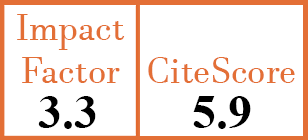Reviews
Role of prostaglandins in rheumatoid arthritis
Y. Ma1, F.-F. Hong2, S.-L. Yang3
- Department of Physiology, College of Medicine, Nanchang University, China.
- Department of Experimental Teaching Center, Nanchang University, China. hongfenfang@126.com
- Department of Physiology, College of Medicine, Nanchang University, China. slyang@ncu.edu.cn
CER13308
2021 Vol.39, N°1
PI 0162, PF 0172
Reviews
Free to view
(click on article PDF icon to read the article)
PMID: 32828139 [PubMed]
Received: 12/03/2020
Accepted : 11/05/2020
In Press: 21/07/2020
Published: 05/02/2021
Abstract
Rheumatoid arthritis (RA) is an autoimmune disease characterised by systemic and chronic synovitis that lead to joint destruction, pain, and many complications. Treatments only relieve certain symptoms, but do not cure RA completely. Prostaglandins (PGs) are lipid signalling molecules and released in the early phase of RA. Increasing evidences have shown five main contribution of PGs to the different stages and symptoms of RA. First, PGs maintain the autoimmune response and immune-system inflammation by modulating the differentiation, maturation, and cytokine production of immune cells. Second, PGs are beneficial for leukocyte infiltration, synovial hyperplasia, and angiogenesis to promote synovitis. Third, PGs are involved in cartilage degradation and bone resorption. Fourth, PGs are important mediators of joint-pain regulation. Finally, in the late stage of RA inflammation, PGs play a part in joint protection. Those findings suggest that PGs are potential therapy targets for RA. This review highlights recent advances in the RA development caused by PGs, and provides recommendations for future research directions.


